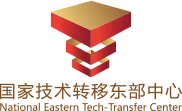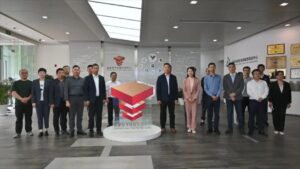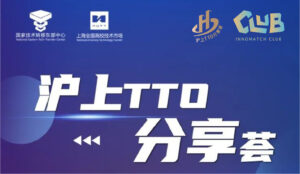With the integration of the global economy, a new round of mergers and acquisitions has quietly emerged, and the pattern of international mergers and acquisitions is also changing. Against such a background, technology-acquiring overseas M&A has become an important means for enterprises to participate in international competition in order to enhance their independent innovation capability, speed up industrial transformation and upgrading and institutional optimization, and help China's economy achieve leapfrog development.
Definition and classification of technology acquisition overseas M&A
The technology acquisition type of overseas M&A refers to the M&A of upstream and downstream overseas enterprises and competitors that possess the same or related technologies as the company's core business, with the purpose of acquiring such technologies. Based on the purpose of technology acquisition, technology-acquisition M&A can be divided into three categories: horizontal M&A, vertical M&A and mixed M&A.
horizontal merger(b) The TNC should be able to acquire new technologies related to its core business. If the main business related to the transnational corporation's operation of one or more technologies in the hands of others, this not only makes the transnational corporation's products and research and development design subject to others, but also makes the enterprise lose market monopoly power, profit loss obviously.
vertical mergers and acquisitions.Access to upstream and downstream technologies related to the core business can save transaction costs; help enterprises develop more new products and technologies, making the product range more diversified; help enterprises allocate technology factor resources on a global scale, and better carry out integrated international production.
mixed mergers and acquisitions.(a) Acquisition of irrelevant technologies. When an enterprise wants to enter a new technology field, it can usually use technology acquisition to integrate the target enterprise and its technology, market, personnel and organization management, so as to break through the technical barriers and open up a new field; it can achieve transformation and upgrading of the enterprise through the injection and transfer of resources and capabilities.
I. Motivations for technology acquisition-oriented overseas M&A by Chinese enterprises
Under the global industrial landscape, domestic enterprises urgently need to enhance their technological innovation capacity. The key to enhancing their technological innovation capability lies in acquiring strategic resources and forming core capabilities, and there are only two basic ways to do this: self-accumulation and external acquisition. Resource and capacity bottlenecks basically limit the possibility of Chinese enterprises to achieve rapid improvement purely through self-accumulation, and market competition is cruel and time is not equal, therefore, make full use of capital, cost and local market advantages, through overseas mergers and acquisitions of technologically advanced enterprises in similar industries, to obtain strategic resources and core capabilities from external sources, which has become an important way for Chinese enterprises to innovate technology.
II. Trends in overseas M&A by domestic enterprises
1. From the overall trend over the past years, by the end of 2015, the number of overseas M&A deals of domestic enterprises increased by 40% and the value increased by 21%, hitting a record high.
2. Judging from the classification of M&A enterprises, private enterprises continue to lead in overseas M&A, while the participation of state-owned enterprises continues to be slightly slow.
3. In terms of the purpose of M&As, domestic enterprises are increasingly pursuing technology, brands and specializations in overseas M&As and "importing" them; executing outbound growth strategies; and gradually building geographically diversified portfolios (although still at an early stage).
4. In terms of M&A destinations, developed countries such as North America and Europe remain the top destinations for M&A. However, domestic companies are also increasingly interested in opportunities in Asia. However, domestic companies are also increasingly interested in opportunities in Asia, and opportunities related to the "One Belt, One Road" strategy may drive future deals.
III. Comparison of technology M&As and other methods of external technology acquisition
There are several main ways for companies to acquire technology externally, mergers and acquisitions, joint research and development, technology purchases, technology alliances, joint ventures, joint research and development, and commissioned research and development.
The main advantage of technology-seeking overseas M&A over other methods of acquiring technology is in its technological synergy and speed effects.
1. Technology synergies
Technological synergy mainly refers to the ability of enterprises to improve existing technologies or generate new technologies after M&A. From the perspective of horizontal M&A, the new technologies acquired can not only save the corresponding R&D costs, but also enable enterprises to generate new R&D capabilities, carry out technological reinvention, and generate technological continuity. For example, in the early 20th century, DuPont made a series of horizontal mergers and acquisitions in the chemical industry, merging more than 100 companies and acquiring a large number of production technologies in the chemical industry. From the perspective of vertical mergers and acquisitions, if the upstream and downstream technologies acquired through mergers and acquisitions can be smoothly connected with the original technology, in addition to saving transaction costs, it can also develop more new technologies, so as to better allocate resources on a global scale. Typically, for example, in the pharmaceutical industry, the Roche Group, which is engaged in the pharmaceutical, vitamin and fine chemical, and diagnostic businesses, has acquired the upstream technology by acquiring Tastemaker in the US and Roure Bertrand Dupont in France, which focuses on the fragrance business, twice, and later acquired two companies that focus on the diagnostic business and medical devices, thus acquiring the upstream technology from the Pure pharmaceutical companies have evolved into pharmaceutical companies that now cover fine chemical and diagnostic businesses. In terms of hybrid M&A, there are generally no technological synergies because the acquiring companies are acquiring completely unrelated technologies. The purpose of seeking technology through hybrid M&A is to break through technological barriers and enter into technology-based industries. However, with the advancement of technology and fierce competition in the market, companies have shifted from the expansion strategy pursued in the past to the current strategy of strengthening core industries and core technologies and have begun to divest non-core assets and businesses. For example, after Unilever sold its chemical division, it invested its capital in industries with faster profit growth to achieve an optimal industrial mix.
2. Speed effect
Through mergers and acquisitions, enterprises can save the complicated procedures and time required to build new enterprises, and can quickly access the target company's readily available production equipment, technical personnel and management personnel and management system and other technical elements of the package, directly shortening the product life cycle of the research and development stage of the required time to speed up the pace of research and development. At the same time, the rapid establishment of overseas sales network channels greatly shortens the input-output cycle and helps enterprises to be able to seize favorable business opportunities. Therefore, enterprises can quickly achieve technological catch-up through technology-acquisition-oriented overseas M&As.
IV. Issues and strategies in technology-seeking overseas M&As
At present, in the actual operation process, there are many problems when domestic enterprises seek technology M&A overseas, mainly involving the following three major difficulties: first, domestic enterprises often have difficulty in acquiring the required core technology when conducting overseas technology M&A; second, domestic enterprises are weak in R & D strength, which makes it difficult to form post-merger technology re-development; third, the integration and management capacity of the merged enterprise is insufficient. Therefore, from the perspective of the technology itself, the technology acquired may be outdated/backward and cannot achieve speed advantages; at the enterprise level, it is difficult to achieve technological synergy due to the lack of R&D capabilities and the inability to effectively integrate with existing technological elements.
To address the above issues, we analyze the technology itself, the company level and the market level and make the following recommendations.
1.Acquire technologies that are relevant and compatible with your core business, and avoid blind acquisitions.
Acquisition of technology-based overseas M&As are strategic acquisitions by companies that seek upstream research and development and core component manufacturing technologies for their own use in the value chain. In this case, the company should use M&A to complete or strengthen its core competencies in technology. Without a clear M&A strategy, without a clear understanding of the firm's existing technological strengths and weaknesses, and without the ability to take advantage of the complementary resources and skills of technology, the firm's core technological capabilities cannot be enhanced, often leading to the failure of the M&A.
2. Strengthen the R&D strength of the enterprise itself
Technology can be bought and sold, but R&D strength cannot be bought and sold; management can be introduced, but core competitive ability cannot be introduced; talents can be attracted, but ideas cannot be formed. Compared to overseas enterprises, domestic enterprises invest too little in R&D and lack research on core technologies.
3. Fully consider the relevance of foreign technology to the domestic market, and pay attention to the applicability of technology.
When companies make technology acquisitions, they should make a strict distinction between the spending power of domestic and foreign markets. It is counterproductive to pursue highly sophisticated technology. In the process of overseas technology M&A, the first and foremost task is to carefully analyze the domestic and overseas market conditions of relevant technologies and products, and the enterprises should form a global layout of "overseas R&D bases and domestic production bases" to ensure that the technologies successfully developed overseas have broad market application prospects. It can only lead to a huge waste of R&D costs and financial risk.
V. Suggestions for implementing technology-seeking overseas M&A processes
1. Analyze the enterprise's own situation and highlight its strengths.
In order to successfully carry out technology M&A, multinational enterprises must analyze their own strengths and weaknesses, examine their own situation comprehensively, select the target from the perspective of complementary resources, acquire the strategic resources needed to build and cultivate various core competencies, and create conditions for the enterprise to cultivate sustainable competitive advantages. Self-analysis items should include the industry, products (services), target market analysis, core competitiveness, resources, production and operation status, financial status, development potential and scale of the enterprise.
The success of an enterprise depends on the core competencies it possesses, and the greater the correlation between its various businesses, the more efficiently it can use its core competencies. Due to the rapid development of high technology, it is impossible for any multinational company to have a competitive advantage in all fields. Therefore, M&As of multinational enterprises should focus on the relevant areas of the enterprise, concentrating on the areas in which the enterprise is best at, and exploiting business areas in which it has accumulated knowledge in technology, markets, tangible, intangible, individual and organizational aspects.
2. Establishment of cross-border M&A task forces
Set up a dedicated team to execute cross-border M&As, develop a detailed feasibility planning strategy, and facilitate the overall cross-border M&As. Companies that frequently carry out M&A activities can set up permanent M&A organizations, while companies that are new to M&A or infrequent M&A activities do not need to set up permanent M&A organizations, but can set up temporary M&A teams or use external professional technical transaction agencies to achieve their objectives. Attach importance to the structure and quality of the M&A team, a complete M&A team should include team leaders, technical experts, operations managers, financial analysts, investment banks, accountants, tax experts, legal experts, human resources experts and other nine types of professionals. When an enterprise cannot set up a complete M&A team on its own, it can use external forces and resources, such as university research institutes and technology trading intermediaries, to conduct professional analyses and achieve a better understanding of the target technology, effective cost savings, and coordination among various experts and departments.
3. Identify appropriate technical targets for M&A
When selecting a target company, the acquirer should consider the future market objectives of the company and should not make a blind decision. When the company makes a strategic analysis and formulates a merger and acquisition approach, it needs to focus on several major aspects of the target enterprise, including: the management level of the target enterprise based on its corporate strategy and business performance; the position of the target enterprise in its industry, its competition status and its competitiveness; the future development trend of technology and competition in the industry; the ability of the target enterprise to adapt to the development of competition; the financial status of the target enterprise and its ability to compete in the market; and the ability of the target enterprise to compete in the market. Stock market performance. The sources of information on the target technology are: attendance at professional conferences, conversations with people outside the company to find relevant information, networks of peers and business contacts, business networks (pre-existing business relationships), intermediaries, professional consulting firms, venture capital firms, databases and patents, foreign visits, commercial or specialized banks, various press and media releases, professional and technical information. Magazines, technical publications and other publications, platform sharing resources for technology trading organizations, technology target search outsourcing, etc.
4. Evaluation of target companies
A value assessment of the target company is an important prerequisite for the identification of the final technology target and the execution of the M&A strategy. Three types of valuation methods are commonly used: the income, cost and market approaches.
Income approach.
It emphasizes the return on investment of a technology asset, mainly measuring the present value of its expected return and using discounted cash flows to assess the value of the assets of the merged party. This method fully takes into account the time value of money, when the risk is certain, the target enterprise expected cash flow is large, the technology value, that is, the future cash flow and the actual value of the enterprise is positively correlated; when the expected cash flow is certain, the risk is large, the target enterprise technology value is small, that is, the future cash flow and the actual value of the enterprise is negatively correlated. Using the discounted cash flow method, the future cash flows of the merged company are converted to present value at a corresponding discount rate to measure the technology value of the merged company. Firstly, the discounted cash flow method is only applicable to companies with positive net cash inflows that are in stable business conditions, and cannot be used by companies with negative cash flows that are in distress. The time horizon is typically 5 to 10 years, and the bias in the estimate of the value of the firm's technology increases incrementally with time, with a consequent decrease in the accuracy of the estimate.
Cost method.
The cost method is based on the value of the asset and includes the replacement cost, historical cost and liquidation value methods. The replacement cost method mainly focuses on the cost, is compared to the current market value to calculate the purchase or re-construction of the same asset should pay the capital cost, this method is the default total value of assets equal to tangible assets plus intangible assets minus liabilities, it should be noted that the replacement cost should be fine-tuned to the book value, specifically including the item-by-item adjustment method and price index method, the results vary with the method. The historical cost method is relatively simple and objective, and is based on the net book value of assets in the balance sheet to assess the technical value of the merged enterprise. The historical cost method is only appropriate for simple technology acquisitions of unlisted companies because of the large discrepancy between historical cost and current market prices, which leads to large deviations in the valuation results and the failure of technology acquisitions. The liquidation value method is a method of valuation based on the liquidation net income of the target company in the case of insolvency, where the liquidation net income is the proceeds from the sale of all real estate less liabilities, mainly applicable to companies in financial crisis, the loss of value-added profitability.
Market Act.
The market approach refers to the selection of one or several companies in the same industry market that are similar to the target company's main business or financial and operational indicators as comparable reference items, and the estimation of the target company's technical value by analogy with the financial data of comparable companies. The prerequisite for this method is the existence of a mature and active trading market, so that there is sufficient sample data of comparable companies to select. After collecting a large amount of sample data, the closest one or more comparable samples with similar business types, scale of operation and financial accounting standards are selected as the reference; the corresponding multiplier (either based on the market price or on the enterprise value, the most commonly used method being the P/E multiplier model) is then selected, which organically links the company's earnings to the market value. Comparable P/E ratios and expected earnings of the merged company are evaluated. As the objective prerequisites for the existence of the market approach are relatively strict, China's capital market is not yet perfect and mature, and information on the securities market is not comprehensive, the P/E ratio cannot be accurately determined and its application is temporarily limited.
In addition, in the process of technology M&A, one should also seek the assistance of professional intermediaries such as law firms, accounting firms, investment banks and relevant financial institutions. Lawyers can ensure that the entire M&A activity is carried out in accordance with the legal framework, can make the terms of the contract more stringent so as to ensure the interests of both parties to the transaction, and can also help coordinate the relationship between shareholders, creditors and financial institutions. On the one hand, accountants can help review the accounts of the target company and conduct acquisition audits, and on the other hand, they can also assist in dealing with some of the tax aspects of the merger. Investment banks and financial institutions mainly provide financing for mergers and acquisitions, as well as acting as financial advisors. The services of these professional intermediaries can provide a strong guarantee of a successful acquisition.
5. Conducting major project reviews
First, a review of the motivation for the sale. The acquirer must understand the target company's reasons for selling the technology and be in a good position to negotiate based on the urgency of its sale. Usually the company's reasons for selling the technology are: research and development costs and risks continue to increase, and the technology is not entirely related to the company's main business; the technology is not related to the company's overall strategy; financial or other constraints; shareholders or the company's financial difficulties; the company's profits are not good, and so on. A company in financial crisis may be an excellent acquisition opportunity if the acquirer has the expertise and the capital to integrate the company in crisis.
Second, R&D and technical capability review. By setting up a review panel and including external advisors, the R&D and technical capabilities of the merged party are assessed for feasibility.
Third, key employee turnover review. Because mergers and acquisitions may cause job instability, it is not easy to retain key employees of the target company. Therefore, the company must do a review of key employees before signing the M&A contract and must communicate well with the key employees who have knowledge of the company. Retaining the best employees in the target company who have the ability to improve the company's technical skills will increase the chances of success of the merger.
6. use a diversified portfolio of payment instruments to reduce risk
M&A activities need to avoid the risks of payment processes to the maximum extent possible. Different payment methods have different advantages and payment risks, so they need to be integrated and designed to study the optimal combined payment structure. The key factor to optimize the mix is to use the cash outflows from the combined payment methods and the cash inflows from the risky assets, and match them in terms of maturity and quantity, so that the future cash flows from the assets can compensate for the liquidity risks and debt-servicing risks corresponding to the capital outflows in the payment process, and ultimately prevent and control the risks of cash overpayment and equity dilution caused by improper payment methods. In order to ensure that enterprises have good asset liquidity and industrial control rights after technology acquisition. At present, cash and equity payment methods occupy a large proportion of the M&A market in China, and hybrid payment methods have not yet been popularized. Therefore, after the optimal structure of hybrid payment is reached, the prospect and value of its application are worth looking forward to. When facing payment problems, enterprises can consult technical trading institutions on payment methods in order to obtain different financial solutions, disperse the financial risks brought about by M&A and avoid risk exposure.
7. Emphasis on post-merger integration of technical staff
Retaining talent and passing on knowledge is the focus of M&A integration efforts, and the success of technical talent integration is directly related to the development of the technology acquired by the acquisition. For M&A with technology acquisition as the main goal, the value of the technology that the other party can provide in the future is valued, therefore, the integration of technology is in fact the integration of technical personnel. The loss of technical personnel will increase the cost of understanding and applying existing technology, while the retention of key employees of the acquiring company will not only reduce the number of potential competitors, but also reduce the number of senior technical personnel and save investment in research and development. A successful merger or acquisition depends first on employee retention, then on new product development, and finally on return on investment. For Chinese enterprises, the integration of technical personnel after M&A also needs to consider labor costs, therefore, while retaining the core technical personnel, it is also necessary to train the original R & D personnel to digest and absorb the acquired technology to fully improve their technological innovation capabilities.









